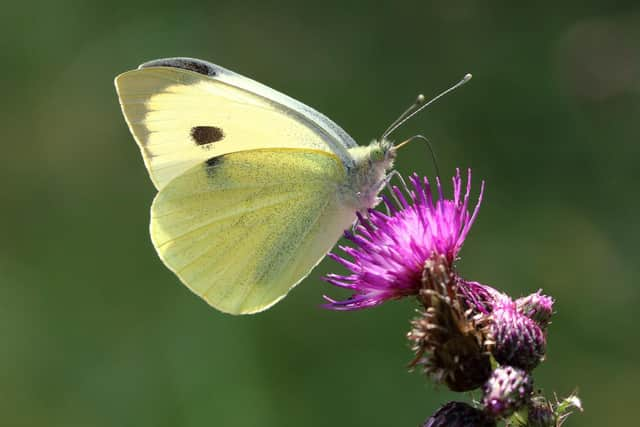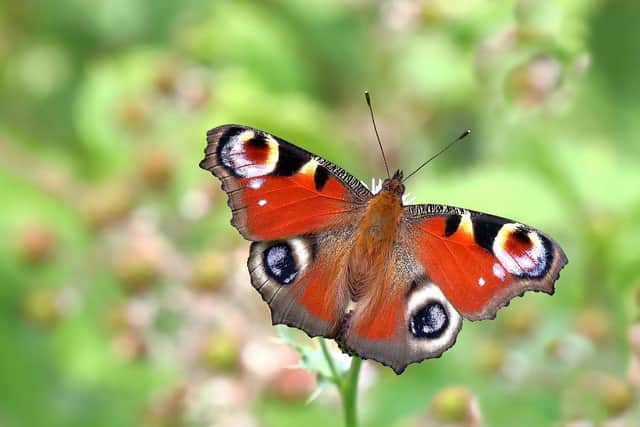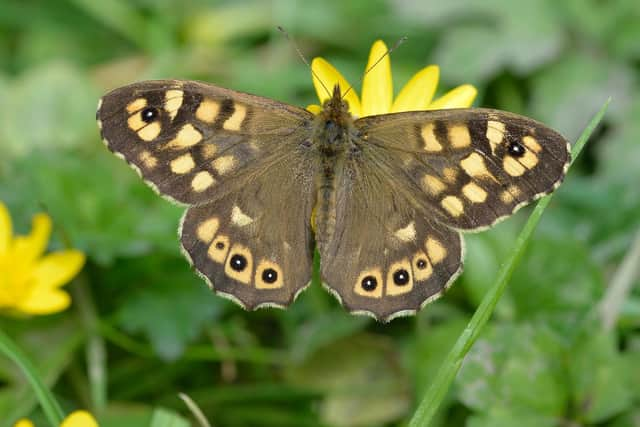Big Butterfly Count 2020: three-quarters see fall in numbers
However the insects have suffered their worst year since the launch of the biggest butterfly survey in the world which sees people go out into their gardens for 15 minutes to count what they see.
The Big Butterfly Count reported the lowest average number of butterflies per count – 10.6 – since recording began in 2010.
Advertisement
Hide AdAdvertisement
Hide AdJust a quarter of the 19 species monitored in the three weeks from July 17 to August 9 saw increases. Big hitters included Large and Small White butterflies, which have two broods, and seem to have enjoyed a long and populous summer.


However Peacocks and Small Tortoiseshells, which are also double-brooded, were down 42 per cent and 41 per cent respectively, possibly because the timing of the survey missed their peak.
Unsurprisingly after last year’s “Painted Lady year” a once-in-a-decade event when unusually high numbers of this migratory butterfly arrive in the UK, numbers were down 99 per cent.
Speckled Wood, Ringlets and Meadow Brown (down 33 per cent, 18 per cent and two respectively) were probably affected by the record wet weather in February.
Advertisement
Hide AdAdvertisement
Hide AdDr Zoë Randle, Senior Surveys Officer at Butterfly Conservation said: “We had a really warm spring which would encourage the Large and Small White butterflies. When they emerge early it benefits their population. Their first brood is big and strong and that leads to a bumper second generation.


“Peacocks and Small Tortoiseshells are also double-brooded, but didn’t show the same increases.
“We either missed the second brood (because of the timing of the survey) or it was too early for the second brood.”
Dr Randle said numbers fluctuated every year, and the Big Butterfly Count was just a snapshot. However long term trends show that three-quarters of the UKs butterflies are in decline.
Advertisement
Hide AdAdvertisement
Hide AdAs well as climate change, habitat loss, agricultural intensification and air pollution all play a part. “Pesticide use, hedgerow removal, lack of field margins - all these are having an impact,” she said.


“It is important to remember our gardens are a habitat, what we grow in our gardens, what pesticides we use, all this again will have an impact.”
In the past year 800 hectares have been covered in plastic grass, leaving her “bewildered”.
She says gardeners can play a part by choosing butterfly-friendly plants, from verbena bonariensis to lavender, but also nettles, holly and oak.
Advertisement
Hide AdAdvertisement
Hide Ad“I know a lot of people have gone for plastic grass because they don’t have time to cut it - but rather than do that I’d suggest they turn their lawn into a widflower meadow, “ she added.
In Yorkshire people carried out 8,591 counts out of an all-England total of 132,324, but regional results were not available.
Dr Martin Partridge, chair of the Yorkshire branch of BC, who lives near Stokesley, said poor weather during the survey period probably meant people not getting out as much.
He also thinks the early emergence of butterflies played a part in a “fairly average” year.
He said: “My view is we missed the peak of a lot of common butterflies we would expect to normally see during the count.”
Comment Guidelines
National World encourages reader discussion on our stories. User feedback, insights and back-and-forth exchanges add a rich layer of context to reporting. Please review our Community Guidelines before commenting.